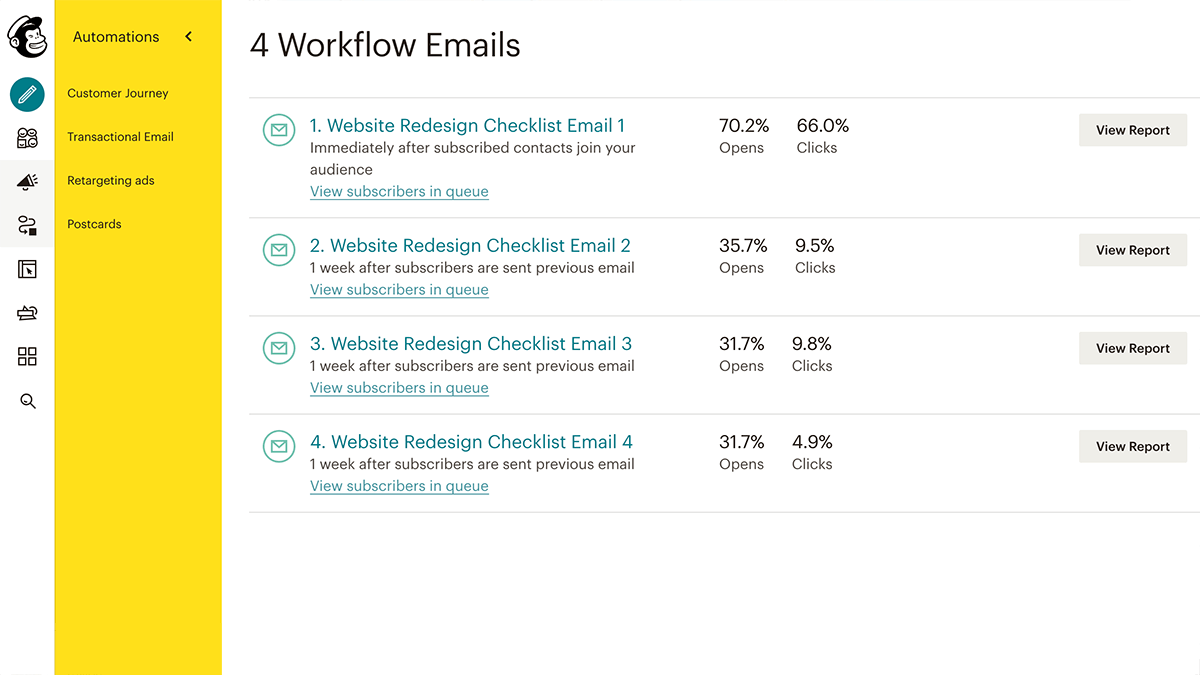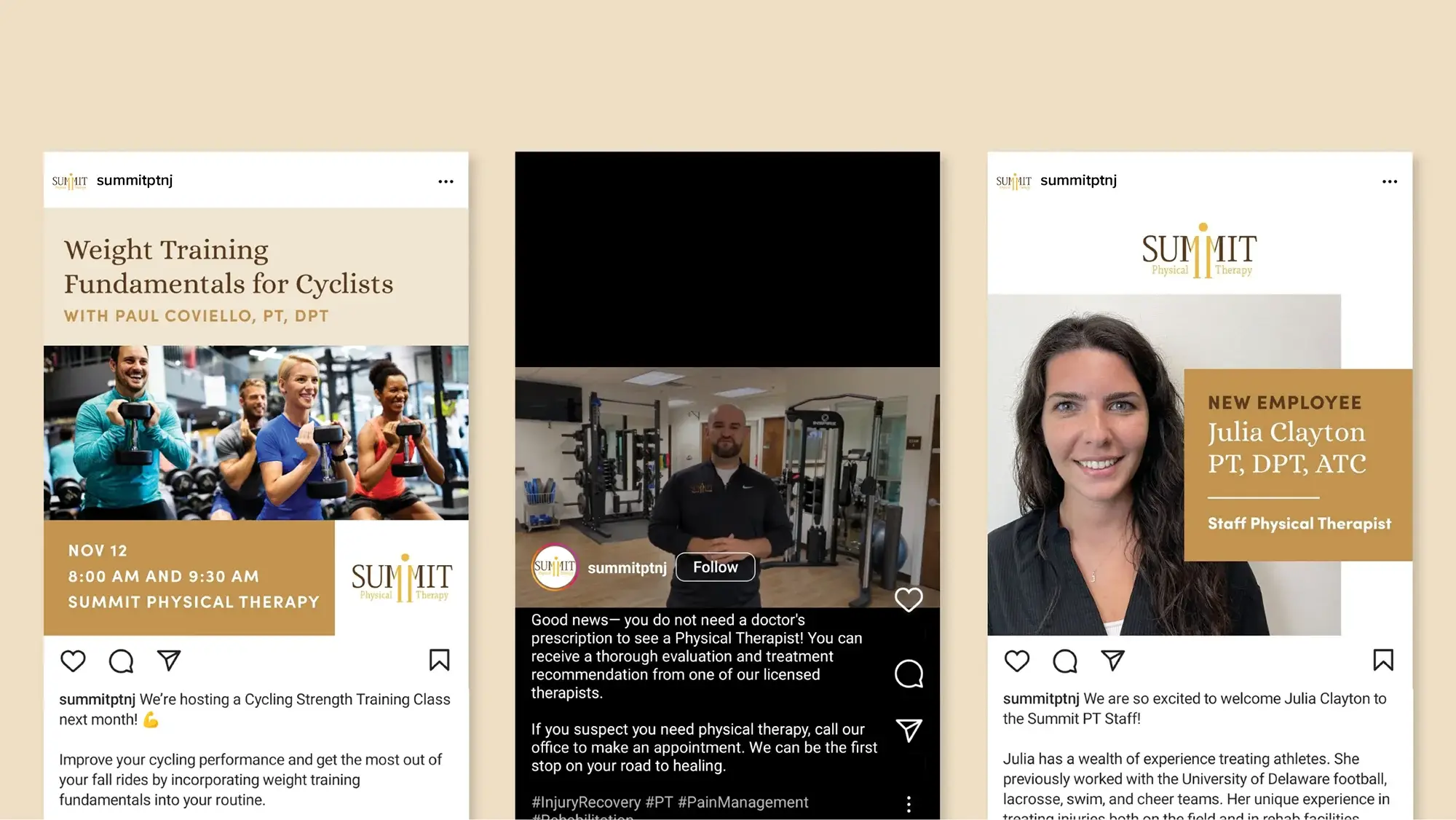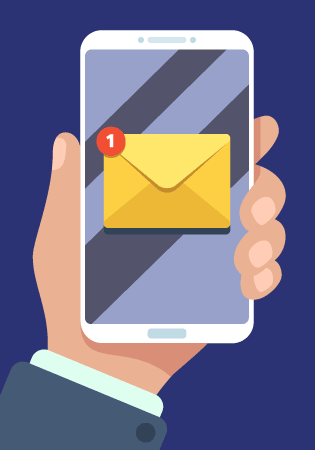Marketing automation makes it easier to acquire new customers and provide them with information that is important and personalized. It’s proof that smarter marketing efforts can help stay in the forefront of a customer’s mind, and hopefully encourage a sale. So what is marketing automation and how can you get started with it?
What is marketing automation?
Marketing automation is the process of using software to complete repetitive marketing tasks. This could be responding to website inquiries or sending targeted offers to existing customer segments. Marketing automation is designed to nurture sales leads and personalize marketing messages and content, and in the process save time and effort. For example, a new customer made a purchase on your website and then you followed up a week later with a new, relevant offer they are likely to be interested in, resulting in a probable sale.
What kind of businesses can benefit from marketing automation?
Enterprise service providers, large e-commerce companies, regional non-profits, and even small retail businesses can all benefit from some form of marketing automation. Marketing automation has become commonplace with the abundance of affordable tools that are now available. The tools cover a wide gamut of cost and complexity, starting at just $9.99 per month, going up into the thousands per month for more complex operations.
Think about repetitive marketing events that happen in your business. Maybe you would like to convert a new customer into a repeat customer. A series of email campaigns could be built and automatically adjusted depending how they interact with the email. For example, if a small business customer opens an email but didn’t click to learn about your new product, you can send a follow-up email (or series of emails) that includes varied incentives to influence a specific marketing transaction.
Using Autoresponders (Drip Campaigns)
One of the simplest ways to get started with marketing automation is to build and schedule an autoresponder or drip campaign (a series of emails with triggers). It all starts when a person signs up for your email list, triggering the campaign upon which they will receive several, successive emails.

At Trillion, we have several autoresponder marketing automation campaigns set up on our website. Our website redesign checklist is a free PDF that helps people who are about to embark on a website refresh. In the download—shared only after a valid name and email is submitted—we provide helpful information which can be used as a guide for planning and estimating a new website.
In our marketing automation process, we have identified that the person is interested in website redesign. Over the coming weeks, we send them a series of emails with helpful tips about the website redesign process. We created the download and campaign once and the series of emails begin their scheduled rotation every time someone signs up for the free checklist download.
Abandoned Cart Email (E-commerce Websites)
Although shoppers in brick and mortar stores rarely abandon their carts, abandonment of virtual shopping carts is quite common. You’ve probably abandoned plenty yourself. But as an e-commerce website, it’s in your best interest to encourage more people to complete their purchase instead of abandoning their shopping cart. With marketing automation, shopping cart abandonment can be mitigated and reduced with the help of abandoned cart emails.
E-commerce purchase abandonment most frequently occurs during check-out. Even with an optimized website where the process is efficient, abandonment still happens and can exceed 80% on mobile devices according to a recent Barilliance report.
…abandoned cart emails see an average open rate of 43%!
Tools such as WooCommerce Follow-Ups and other e-commerce platforms can trigger automated emails to help convert an abandoned shopping cart into a sale. Crafting a compelling and personalized subject line of the email is important. Plus, abandoned cart emails see an average open rate of 43%! With these numbers, abandoned shopping cart marketing automation is a no-brainer. The emails should provide a sense of urgency to purchase, prominently feature the items in the cart, and consider offering a discount if purchasing within a specified period of time.
Remarketing
Have you ever visited a website only to see advertisements from that company on other websites after you visited it? Remarketing is a way to connect with people who previously interacted with your website. It allows you to strategically position ads in front of these people as they visit other websites. Having your ads, even of specific products, helps increase brand awareness and promotes making a purchase.
Remarketing automation works with the help of a tracking pixel that is downloaded when a person visits your website. The pixel can provide you the ability to show specific ads of specific products/services to specific visitors. In turn, the ads can link to landing pages on your website that encourage a marketing goal or conversion.
For example, a person comes to your website and views your new product line but does not make a purchase. Later, they visit another website—say, their favorite entertainment news site. You are running a remarketing campaign via an ad network that works with this entertainment site. They see your ad featuring your new product line.
The aim of the retargeting ad is to remind your visitor of the product line, and convince them to click and make the purchase they didn’t make previously.
What kinds of marketing automation tools are available and what do they cost?
The examples above provide some basic and affordable means to getting started with marketing automation and to help streamline your marketing efforts. Email marketing accounts with Constant Contact and MailChimp start at just $9.99 per month. The accounts allow for standard email marketing campaigns—MailChimp even has a free account for up to 2,000 emails and includes basic marketing tools. Both Constant Contact and MailChimp have expanded their services beyond email marketing and have become powerful marketing automation platforms, especially for small- and medium-sized businesses. The cost for expanded automation on both of these platforms will vary based on your list size and the automation tools you require. A premium MailChimp account with up to 25,000 emails costs $480 per month.
HubSpot, another very popular platform, has been around since 2006. They develop a ton of content catering to email marketing, marketing automation, and more. While HubSpot does offer free tools and many free downloads, their basic marketing automation account starts at $45 per month for up to 1,000 marketing contacts. Their enterprise level account for 10,000+ marketing contacts starts at $3,200 per month. As you can see, the range in costs is dramatic but is helpful in building and growing into more advanced tools
How can automation work with your existing website?
Automation processes and tools can be integrated with many existing websites so rebuilding isn’t always necessary. Popular content management systems such as WordPress can integrate with many marketing automation tools, including MailChimp, SalesForce, and HubSpot. In some cases, installing a plugin will be enough to get things started. However, a web developer will need to be involved to some extent with integrating marketing automation to work smoothly with your existing website.
Let’s Discuss Integrating Marketing Automation for Your Company
Marketing automation can streamline efforts and make conversions easier and less time consuming. If you would like to see what marketing automation could look like for your company, contact Trillion at 908.219.4703 or complete our simple contact form and one of our partners will reach out to you to schedule a call.







